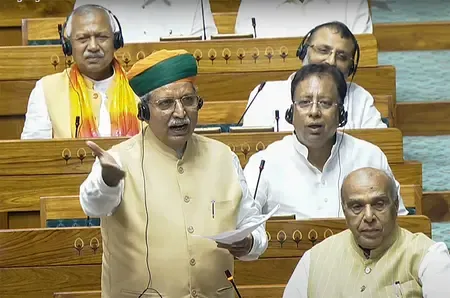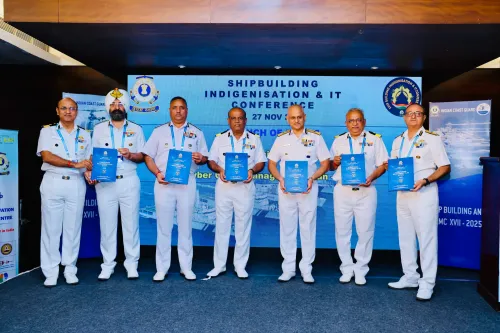Have Over 500 Crore Pages in HC and District Courts Been Digitised?

Synopsis
Key Takeaways
- Over 500 crore pages digitised in Indian courts.
- e-Courts Project Phase III approved with a budget of Rs 7,210 crore.
- New e-Filing and e-Payment systems launched for users.
- 1814 eSewa Kendras established nationwide for public access.
- Significant increase in court halls and residential units since 2014.
New Delhi, Aug 1 (NationPress) As part of the e-Courts Project Phase III, a staggering 213.29 crore pages from High Courts and 307.89 crore pages from District Courts have been digitised as of June 30, 2025, according to a statement made in Lok Sabha on Friday.
The Minister of State (Independent Charge) for Law and Justice, Arjun Ram Meghwal, disclosed in a written response that the e-Courts initiative, which has been operational since 2007, is an integrated Mission Mode Project aimed at enhancing the Information and Communication Technology (ICT) capabilities of the Indian Judiciary under the National e-Governance Plan.
Phase III of the e-Courts Project, covering the period from 2023 to 2027, received approval in September 2023 with a budget allocation of Rs 7,210 crore.
This phase involves various measures to enhance court management processes and digitise services for stakeholders, including lawyers, litigants, and judges.
A key aspect of Phase III is the scanning, digitisation, and digital preservation of case records, with a dedicated budget of Rs 2,038.40 crore.
A software solution has been introduced for the preservation of judicial records in High Courts and District Courts. Additionally, the Digital Courts 2.1 software has been created to facilitate courts in operating in a paperless environment.
The e-Filing system (version 3.0) has also been launched, featuring enhanced tools for lawyers to access and submit case documents from any location. Furthermore, an e-Payment system has been implemented to ensure a smooth fee transfer process.
Another notable initiative is the National Service and Tracking of Electronic Processes (NSTEP), aimed at modernising process serving and the issuance of summons.
Additionally, a Judgment Search portal has been introduced, allowing searches by Bench, Case Type, Case Number, Year, and Petitioner/Respondent Name, all available free of charge. To improve citizen access to services, 1814 eSewa Kendras (Facilitation Centres) have been established nationwide. Moreover, 29 Virtual Courts are operational across 21 States/UTs to handle traffic-related offences.
The Minister noted that the Department of Justice has been executing the Centrally Sponsored Scheme (CSS) for the Development of Infrastructure Facilities for the judiciary since 1993-94 to bolster State Governments' resources through a defined fund-sharing model.
This scheme encompasses five components: court halls, residential quarters, lawyers’ halls, digital computer rooms, and toilet complexes.
A total of Rs 12,101.89 crore has been allocated under this scheme since its initiation, with Rs 8,657.59 crore (71.54 percent) disbursed since 2014-15.
The number of court halls has surged from 15,818 in 2014 to 22,372 (an increase of 41.43 percent), while residential units have grown from 10,211 to 19,851 (a remarkable 94.40 percent increase).









